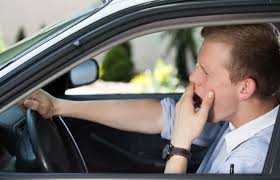
Sleep apnea, which involves breathing that’s interrupted during sleep, is a severe sleep disorder that affects 22 million Americans. Breathing can be interrupted as much as hundreds of time, which causes the brain, as well as other areas of the body, to not receive enough oxygen. One way to treat this sleep disorder is by using CPAP (continuous positive airway pressure) therapy. This entails using a machine that delivers air pressure through a mask that’s been placed over a person’s nose while sleeping.
But many people find the CPAP therapy too bulky and don’t feel comfortable wearing a mask to bed. Fortunately, there are sleep apnea appliances that can be used effectively in keeping the upper airway passages open, so obstructive sleep apnea is prevented. If you suffer from sleep apnea and find wearing a CPAC mask cumbersome, here’s what you need to know, regarding the two primary types of sleep apnea appliances.
Mandibular Advancement Devices
Although there are several sleep apnea appliances, the two main categories are the mandibular advancement device (MAD) and a tongue retaining device (TRD). A mandibular advancement device, which is the most common one used for treating OSA (obstructive sleep apnea), resembles a mouth guard used by athletes. This dental appliance works by holding the lower jaw (mandible) forward so that a user’s airway is opened.
It fits over the lower and upper dental arches and has hinges, or small adjustable “stops”, that ease the lower jaw forward. As a result, the soft palate and tongue are stabilized. Using a MAD also helps to strengthen the airway as it makes the tongue muscle more active, as well other airway muscles.
Tongue Retaining Device
A TRD is similar to a MAD as they both hold the tongue forward. However, unlike a MAD that moves a user’s jaw forward, a TRD pulls a user’s tongue forward. In other words, a TRD has direct control over the tongue. What’s more, it takes more time to get used to wearing a TRD.
Considerations and Warnings
- Failing to treat sleep apnea can result in failing to perform well at school or work. It can even be fatal if you stop breathing long enough or fall asleep while driving.
- Untreated sleep apnea can also lead to several health issues, such as stroke, heart failure or heart attacks, hypertension (high blood pressure), diabetes and headaches.
- “Over-the-counter” or “boil-and-bite” sleep apnea appliances can be found in drug stores and on the internet, but they typically are less effective than custom-made oral appliances.
- You may be missing our on feeling good again. The fatigue you are experiencing may not be due to getting older but that your sleep is interupted by sleep apnea and preventing you from getting a proper rest.
To find out more about a sleep apnea appliance, call Sheridan Dental. Besides treating sleep apnea and snoring, we offer a wide range of dental services, such as TMJ treatment, porcelain veneers, neuromuscular dentistry and other treatments. Please contact us.
